Home » California
Pharmacy Schools in California - 2025
 California is the nation's most populous state, housing around 39 million people. To take care of the healthcare needs of this large population, pharmacists are always in demand. As of 2021, there are estimated to be 33,130 pharmacists working in the state drawing an average annual salary of $146,140. To become a licensed pharmacist, you must complete the Doctor of Pharmacy program from any of the accredited schools in the state. To help you narrow down on the best pharmacy school, we have ranked ACPE accredited pharmacy schools in CA, based on their NAPLEX performance.
California is the nation's most populous state, housing around 39 million people. To take care of the healthcare needs of this large population, pharmacists are always in demand. As of 2021, there are estimated to be 33,130 pharmacists working in the state drawing an average annual salary of $146,140. To become a licensed pharmacist, you must complete the Doctor of Pharmacy program from any of the accredited schools in the state. To help you narrow down on the best pharmacy school, we have ranked ACPE accredited pharmacy schools in CA, based on their NAPLEX performance.
Our Ranking Methodology
The Pharmacy Schools ranking for the state of CA is based on the NAPLEX first time pass rates. Each school was closely evaluated for its NAPLEX performance in the last four years, with 40% weightage given to 2021, 30% to 2020, 20% to 2019 and 10% to 2018. A pharmacy school that consistently has its students passing the NAPLEX on the first attempt speaks volumes about the quality and success of its program.
| NAPLEX Pass Rate Year | Weightage |
| 2018 | 10% |
| 2019 | 20% |
| 2020 | 30% |
| 2021 | 40% |
2025 Ranking of ACPE Accredited Pharmacy Schools in California
#1. University of California San Diego
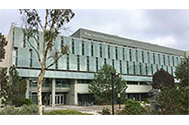
Ranking Score: 97.64%
Location: La Jolla
Program Length: 4 Years
About the College: University of California San Diego's Skaggs School of Pharmacy and Pharmaceutical Sciences is known for its emphasis on research. Nearly half of the 60 students who enter its program each fall will go on to pursue a post-graduate degree.
Program Details: The application deadline is November 1 for the fall semester of the following year; promising candidates will be invited for an onsite interview in December. The fall semester begins in late August. In addition to teaching traditional pharmacology classes, the four-year Pharm D curriculum emphasizes interdisciplinary collaborations with the University's medical school and with other health science schools on campus; and emphasizes emerging topics within the industry such as pharmacogenomics, computational biology and bioinformatics. Beginning in their third year, students participate in clinical placements at hospitals, community clinics and research institutions in San Diego and the surrounding area.
| University of California San Diego NAPLEX Performance | ||
| Year | # of Students Attempted | Pass Rate |
| 2018 | 64 | 98.44% |
| 2019 | 63 | 100.00% |
| 2020 | 52 | 98.00% |
| 2021 | 54 | 96.00% |
#2. University of Southern California
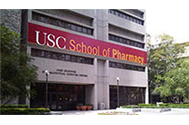
Ranking Score: 95.15%
Location: Los Angeles
Program Length: 4 Years
About the College: University of Southern California School of Pharmacy provides an enormous number of options for aspiring professionals within the field of pharmacology. The school offers a number of concurrent degree programs that allow students to enroll in a Pharm.D. program in CA and pursue an MBA, a J.D. or an MPH at the same time.
Program Details: To complete a four-year degree in pharmacology, students will be required to take 133 units of classroom coursework with a grade point average of 2.5 or higher and participate in a minimum of 1,740 hours of clinical experience. Sponsoring hospitals and community clinics typically require a criminal background checks as well as a drug screening. University of Southern California requires all students to obtain intern licensure with the California State Board of Pharmacy at the beginning of their first year and to maintain that licensure in good standing throughout their enrollment in the School of Pharmacy.
| University of Southern California NAPLEX Performance | ||
| Year | # of Students Attempted | Pass Rate |
| 2018 | 171 | 96.50% |
| 2019 | 173 | 96.00% |
| 2020 | 182 | 93.00% |
| 2021 | 161 | 96.00% |
#3. University of California San Francisco
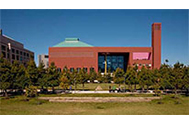
Ranking Score: 94.12%
Location: San Francisco
Program Length: 3 Years
About the College: The School of Pharmacy at University of California San Francisco is one of the most competitive pharmacy colleges in California. U.S. News & World Report consistently ranks this pharmacy program among its top ten nationwide. In 2018, the School switched to a new three-year curriculum. Of the 500 people who apply to this school, a little more than 20 percent will be accepted.
Program Details: The application deadline is November 1 for a fall semester that starts in late August. The school maintains a waiting list. The curriculum emphasizes experiential learning as well as applied patient care skills so that students will have a strong foundation in scientific principles. Year 1 focuses on the cardiovascular, respiratory, renal and gastrointestinal systems while Year 2 focuses psychiatry, infectious diseases and oncology. Toward the end of Year 2, each student chooses his or her own Discovery Project, which is an applied research opportunity in an area of particular personal interest.
| University of California NAPLEX Performance | ||
| Year | # of Students Attempted | Pass Rate |
| 2018 | 113 | 91.15% |
| 2019 | 105 | 96.00% |
| 2020 | 114 | 98.00% |
| 2021 | 202 | 91.00% |
#4. Western University of Health Sciences
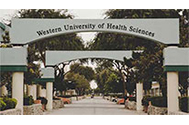
Ranking Score: 94.06%
Location: Pomona
Program Length: 4 Years
About the College: The Pharm.D. professional program at Western University of Health Sciences trains pharmacists to take their place alongside other professionals in today's rapidly evolving health care marketplace. The program offers a wealth of clinical experiences, and students have done rotations in many settings outside southern California, including Hawaii, Illinois, New York, Arizona, Utah and Thailand.
Program Details: Though clinical experiences begin early with a rotation through a community or hospital pharmacy, most of the first and second years are devoted to "block learning," during which students are immersed in the concentrated study of one subject area. Intensive clinical rotations begin in the third year. Western University uses 350 sites, which include county hospitals, private hospitals, VA facilities and pediatric hospitals. The program also provides experiential learning opportunities in compounding pharmacies as well as in chain drug stores and independently owned pharmacies.
| Western University of Health Sciences NAPLEX Performance | ||
| Year | # of Students Attempted | Pass Rate |
| 2018 | 126 | 97.62% |
| 2019 | 133 | 95.00% |
| 2020 | 137 | 95.00% |
| 2021 | 111 | 92.00% |
#5. University of the Pacific
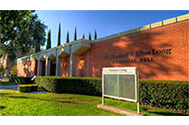
Ranking Score: 92.28%
Location: Stockton
Program Length: 3 Years
About the College: The Thomas J. Long School of Pharmacy and Health Sciences at University of Pacific offers three specializations in the pharmacy field: Pharmacy Practice, which prepares students to work as pharmacists in communities; Pharmaceutics and Medicinal Chemistry, which prepares students for careers in the pharmaceutical industry; and Physiology and Pharmacology, which prepares students for academic careers.
Program Details: The Thomas J. Long School of Pharmacy was the first professional pharmacy program in the U.S. to offer an accelerated three-year program. The application deadline is September 4 if you want to be considered for early admission; otherwise, it is January 7 for the semester that starts the following fall. Students begin developing patient care skills in their very first semester. Clinical rotations take place at medical centers, teaching hospitals and related practice areas throughout Stockton and other parts of the San Joaquin Valley.
| University of the Pacific NAPLEX Performance | ||
| Year | # of Students Attempted | Pass Rate |
| 2018 | 190 | 95.80% |
| 2019 | 195 | 96.00% |
| 2020 | 198 | 93.00% |
| 2021 | 197 | 89.00% |
#6. Touro University
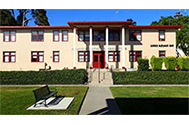
Ranking Score: 91.18%
Location: Vallejo
Program Length:4 Years
About the College: Touro University is a Jewish-sponsored institution of higher learning and professional education. The University is open to students of all faiths, however. Touro admits approximately half the students who apply to its College of Pharmacy, and it has an early admissions program.
Program Details: The University's College of Pharmacy is a unique 2+2 program, which means that students spend their first and second years in a didactic, classroom environment and their third and fourth years pursuing clinical rotations. Classes are small, and faculty members are encouraged to maintain an open door policy. The program has a strong community health focus, and some students may opt to earn a concurrent MPH while simultaneously enrolled in the College of Pharmacy. During their clinical rotations, students are encouraged to become involved in a number of community-based initiatives such as free clinics and health screenings.
| Touro University NAPLEX Performance | ||
| Year | # of Students Attempted | Pass Rate |
| 2018 | 92 | 97.83% |
| 2019 | 84 | 95.00% |
| 2020 | 95 | 88.00% |
| 2021 | 70 | 90.00% |
#7. Loma Linda University
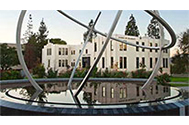
Ranking Score: 87.13%
Location: Loma Linda
Program Length: 4 Years
About the College: Although the School of Pharmacy at Loma Linda University is open to students of all faiths, the University itself is part of the Seventh-day Adventist system of higher education. The University regards the health care professions as healing ministries, and instruction emphasizes Christian values.
Program Details: The application deadline for admission into the fall class is January 7. The first year of the four-year program is exclusively devoted to academic work. Clinical rotations begin during the second year, and students must take a minimum of six Advanced Pharmacy Practice Experience rotations throughout their fourth and final year. Concurrent graduate degree programs are available for students who want to pursue Master's degrees in Bioethics or Health Informatics while they are completing their Pharm.D. studies.
| Loma Linda University NAPLEX Performance | ||
| Year | # of Students Attempted | Pass Rate |
| 2018 | 80 | 91.25% |
| 2019 | 68 | 91.00% |
| 2020 | 58 | 86.00% |
| 2021 | 67 | 85.00% |
#8. California Northstate University
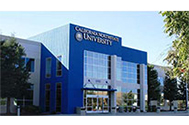
Ranking Score: 81.08%
Location: Elk Grove
Program Length: 4 Years
About the College: California Northstate University College of Pharmacy (CNUCOP) is dedicated to provide progressive educational programs and prepare aspiring pharmacists for a competitive career in the healthcare field. Located in the exotic city of Elk Grove in Sacramento, CA, the college trains students through its three fully equipped departments – Clinical & Administrative, Pharmaceutical & Biomedical Sciences, and Experiential Education.
About the Program: CNUCOP offers a 4-year PharmD program with a sequential coursework, delivered through classroom lectures, independent study which can be done after completion of the first year, lab work, and clinical experiences. During the first three years, you will learn about cell & molecular biology, medicinal chemistry, pharmacokinetics, pharmacoepidemiology, pharmacy law, and introductory level of pharmacy practices. Your last or fourth year will be dedicated to advanced level of pharmacy practices in a variety of settings such as hospitals, community, general medicine, and other patient-care facilities. Graduates of this program upon successfully passing the NAPLEX will be fully capable to efficiently work as pharmacists in the ever-growing field of healthcare.
| California Northstate University NAPLEX Performance | ||
| Year | # of Students Attempted | Pass Rate |
| 2018 | 113 | 85.80% |
| 2019 | 62 | 81.00% |
| 2020 | 111 | 85.00% |
| 2021 | 118 | 77.00% |
Typical Pharm.D. Program Details in CA
Why Should I Apply for an ACPE Accredited Pharm. D. Program?
When you apply for an ACPE Accredited Pharm. D. Program you are assured of receiving quality education that is recognized across the nation for the education standards and the professional degree it offers. Moreover, employers are always on the lookout for accredited program graduates, so you can land that coveted job much sooner.
Program Length
The Pharm. D. Program, on its own, usually takes 4 years to complete. However, since the Pharm. D. requires at least two to four years of undergraduate study to complete the pre-pharmacy curriculum requirements, you will require six to eight years of college study to earn a Pharm. D. degree.
Tuition
Your tuition cost will greatly vary depending on your in-state or out-of-state status. The tuition cost of Doctor of Pharmacy programs in California usually ranges between $150,000 to $250,000. For example, to complete your Pharm. D. from University of California San Diego, you will bear a cost of $161,708 and from Touro University it will cost you $183,200.
Curriculum
The curriculum of a Pharm. D. Program is dynamic and undergoes regular revision, reflecting scientific and technological advances. Covered over a span of 4 years, it varies from school to school and is a combination of required and elective courses. As an example, we look into the curriculum offered by University of Southern California, to give you a general idea of the coursework offered by pharmacy schools in CA. The first three years of the program at USC include foundational courses in biomedical, pharmaceutical, social, administrative and clinical sciences. Students along with the classroom learning, complete Introductory Pharmacy Practice Experiences (IPPE). The IPPE gives students an opportunity to apply the newly acquired knowledge in a variety of practice settings. Towards end of third and the entire fourth year students complete the Advanced Pharmacy Practice Experiences (APPEs), usually set in healthcare settings such as ambulatory care, acute medicine, community pharmaceutical care and hospital.
Sample Curriculum
| Year I Curriculum | Year II Curriculum |
| Pharmaceutics I | Pharmacy Literature Analysis and Drug Information |
| Pharmaceutics II | Therapeutics: Pharmacokinetics |
| Biological Systems I | Case Conference 1 |
| Biological Systems II | Case Conference 2 |
| Pharmacy Practice and Professionalism 1 | Pharmacy Law |
| Pharmacy Practice and Professionalism 2 | Therapeutics: Central Nervous System |
| Calculations and Compounding | Therapeutics: General Medicine and Inflammatory Disorders |
| Metabolism and Cell Biology | Therapeutics: Endocrine System |
| Non-Prescription Therapies | Community Pharmacy Practice |
| Pharmacogenetics | Hospital Pharmacy Practice |
| Pharmacists' Patient Care Process | Elective Pharmacy Practice |
| Medicinal Chemistry | Scholarly Project 1 |
| Pharmaceutics III | Electives |
| Year III Curriculum | Year IV Curriculum |
| Therapeutics: Oncology | Acute Care Clinical APPE |
| Therapeutics: Special Populations | Primary Care APPE |
| Therapeutics: Infectious Diseases | Community Pharmacy APPE |
| Therapeutics: Cardiovascular System | Hospital Pharmacy Practice APPE |
| Case Conference 3 | Doctor of Pharmacy Capstone (a in the fall, and b in the spring) |
| Case Conference 4 | Elective APPE Courses (Must take two courses from list below): |
| Community Pharmacy Practice | Nuclear Pharmacy APPE |
| Hospital Pharmacy Practice | International Pharmacy Practice Experience |
| Elective Pharmacy Practice | Advanced Geriatrics APPE |
| Pharmacy Management and Economics | Pharmaceutical Industry APPE |
| Scholarly Project 2 | Advanced Pharmacy Practice Elective (APPE) |
| Scholarly Project 3 (proposed) | Non-traditional Advanced Pharmacy Practice Elective (APPE) |
| APPE Gateway | |
| Electives |
Licensure - Passing the NAPLEX and CPJE Exam in California
To become a licensed pharmacist in California you are required to pass both, the NAPLEX, administered by the NABP and the CPJE, developed by the California State Board of Pharmacy.
NAPLEX: This exam is administered by the NABP. Before you apply for the NAPLEX you must check with the California State Board of Pharmacy if you are eligible to take this exam. Once the board determines your eligibility you can pay a non-refundable fee and apply for the NAPLEX through the NABP site.
CPJE: To become licensed in California you must pass the CPJE in addition to NAPLEX. Apply to the state board and allow it 30 days to process your application. You can schedule this exam only after the board has determined your eligibility. You can find in-detail information about the exam here. You can even go through a practice test provided by the state board.
California Pharm. D. Graduates NAPLEX Performance (2018-2021)
The performance of Pharm. D. graduates in the golden state over the past 4 years has been pretty much consistent, barring just the year 2021, where the pass percentage dropped to a 89.50%. In 2018, 949 students took the NAPLEX and passed it with an impressive 94.30%. The year 2018 and 2019 saw a remarkable performance, the highest in 4 years, with 949 students passing the NAPLEX with a 94.28% and 883 students passed it with 93.75%.
| School | Location | 2018 | 2019 | 2020 | 2021 | ||||
| #Taken | Pass % | #Taken | Pass % | #Taken | Pass % | #Taken | Pass % | ||
| University of California | La Jolla | 64 | 98.44% | 63 | 100.00% | 52 | 98.00% | 54 | 96.00% |
| University of California | San Francisco | 113 | 91.15% | 105 | 96.00% | 114 | 98.00% | 202 | 91.00% |
| Western University of Health Sciences | Pomona | 126 | 97.62% | 133 | 95.00% | 137 | 95.00% | 111 | 92.00% |
| University of the Pacific | Stockton | 190 | 95.80% | 195 | 96.00% | 198 | 93.00% | 197 | 89.00% |
| University of Southern California | Los Angeles | 171 | 96.50% | 173 | 96.00% | 182 | 93.00% | 161 | 96.00% |
| Touro University | Vallejo | 92 | 97.83% | 84 | 95.00% | 95 | 88.00% | 70 | 90.00% |
| Loma Linda University | Loma Linda | 80 | 91.25% | 68 | 91.00% | 58 | 86.00% | 67 | 85.00% |
| California Northstate University | Elk Grove | 113 | 85.80% | 62 | 81.00% | 111 | 85.00% | 118 | 77.00% |
| Overall California NAPLEX Performance | 949 | 94.30% | 883 | 93.75% | 947 | 92.00% | 980 | 89.50% | |
How Much Do Pharmacists Make in California?
Pharmacists in California take home some of the highest pay packages in the country. On an average, the annual salary of a pharmacist in California is $146,140. The higher cost of living in the state translates into these fat pay checks, which is 16.27% higher than the national average. While, the highest salaries are paid in San Jose-Sunnyvale-Santa Clara, the lowest are in El Centro.
| Type | Salary |
| Hourly | $70.26 |
| Monthly | $12,180 |
| Annual | $146,140 |
| Source: U.S. Bureau of Labor Statistics |
Pharmacist 10-Year Job Outlook in California
The projected 10-year employment growth for a pharmacist in California is 6.71%, considering 2020 as the base year. In 2020 there were 32,800 pharmacists working in the state and this number is set to be 35,000 by 2030. The steady demand for pharmacists is due to growing expansion of the pharmaceutical industry along with the rise in population that results in increasing medical care. This demand leads to approximately 1,490 job openings being created each year.
| 2020 Employment | 2030 Employment | Growth | Projected Annual Job Openings (New + Replacement) | |
| Number | Percent | |||
| 32,800 | 35,000 | 2,200 | 6.71% | 1,490 |
| Source: Career One Stop | ||||
Past 5-Years Employment Growth in CA
If we consider a 5-year period, taking 2017 as our base year we witness an overall employment growth rate that is favorable for pharmacists in the state. Except for 2020, where the demand for pharmacists was in the 1.15%, California has added a good 4,460 pharmacists to its workforce, since 2017. The state has seen a 15.56% growth rate in the employment of its pharmacists from 2017 and 2021.
| Year | Employment | Growth | ||
| Number | Percent | |||
| 2017 | 29,860 | 1,190 | 4.15% | |
| 2018 | 30,950 | 1,090 | 3.65% | |
| 2019 | 32,150 | 1,200 | 3.88% | |
| 2020 | 32,520 | 370 | 1.15% | |
| 2021 | 33,130 | 610 | 1.88% | |
| Total | 4,460 | 15.56% | ||
| Source: U.S. Bureau of Labor Statistics | ||||
Also Check Out